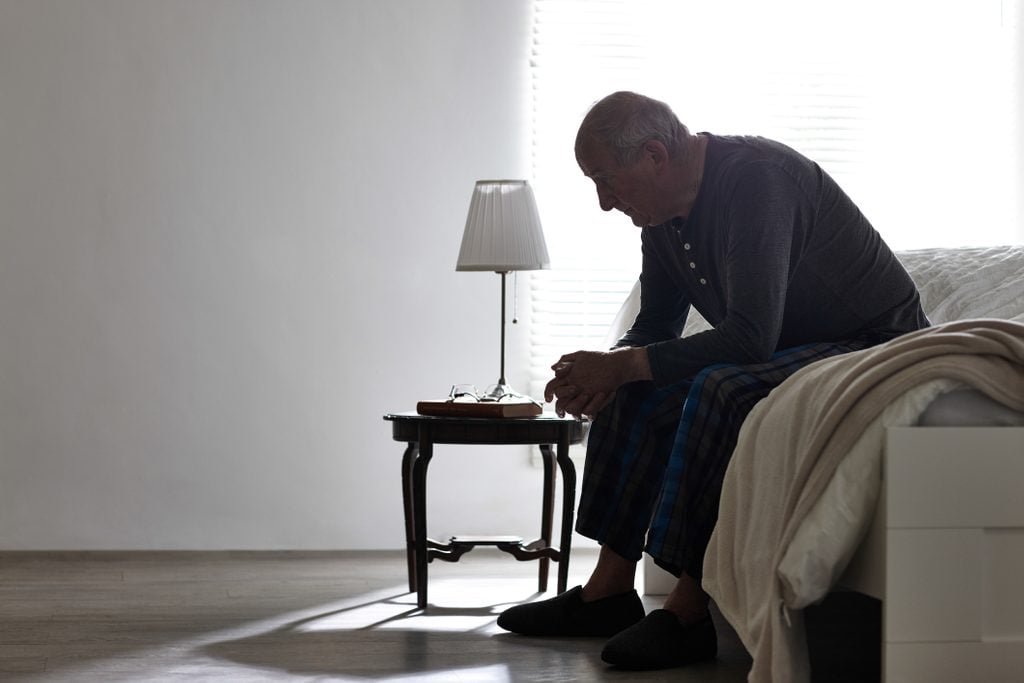Is It Clinical Depression or Everyday Sadness? How to Tell the Difference
Updated: Apr. 30, 2021

Many of us suffer the winter blues, but at some point it crosses a line into a legitmate mental health issue. Here's what you need to know.
If just getting out of bed in the morning is a struggle, and you’re finding few reasons to smile, it’s clear that you’re feeling low. But is it clinical depression?
Depression and sadness (or “the blues”) are often used interchangeably, but there are critical differences.
“The experience of everyday sadness can be a useful starting point to help people understand what depression is and how it can affect them,” explains Rizwan Parvez, MD. “However, unlike everyday sadness, depression is much more debilitating and persistent. It’s not something you simply ‘snap out’ of.”
Depression, which affects an estimated one in 15 adults in any given year, according to the American Psychiatric Association (APA), is also likely not circumstantial. “It isn’t the same as depression caused by a loss, such as the death of a loved one, or a medical condition, such as a thyroid disorder,” Daniel K. Hall-Flavin, MD, told the Mayo Clinic. Sadness from a loss tends to come in waves compared to clinical depression, which is constant. And whereas with grief over a loss, people usually maintain their self-esteem, with depression there are often feelings of worthlessness and self-loathing. Other symptoms, according to the APA, can include feeling sad, reduced interest in activities you normally enjoy, weight fluctuations, trouble sleeping or oversleeping, loss of energy, agitated behavior, difficulty making decisions, and in the extreme, thoughts of suicide. To fit the clinical definition of depression, the symptoms must be present for two weeks or more.
Sadness is obviously more common, as we all face life stressors every day and have the capacity to become sad. With clinical depression, however, there’s normally some genetic predisposition. “We don’t choose to be ‘at risk’ of becoming clinically depressed,” Dr. Parvez explains, but in some people, the odds are simply higher.
To diagnose clinical depression, psychiatrists will conduct a clinical interview to identify specific symptoms, ask about medical and family history, and assess cultural and environmental factors, to arrive at a diagnosis and plan a course of action. “I think of it as an open conversation where a person can describe in their own words what they’re struggling with,” Dr. Parvez says. In some cases, they’ll also do a physical examination and/or a blood test to rule out physical disorders that may be triggering the depressive symptoms.
Clinical depression is treatable. In fact, some 80 to 90 percent of people with depression eventually gain some relief from their symptoms, according to the APA. The most common treatments include psychotherapy and antidepressants, though lifestyle measures such as improved sleep habits and exercise can also help. When he counsels patients with depression, Dr. Parvez says he tries to “establish a sense of control” in his patients’ lives.
To treat patients with everyday sadness, Dr. Parvez turns to optimism. “I try to help people reconnect to the positives. To be present with the sadness to help it pass when they can, and to set it down when it becomes too much,” he says. “I also try to support them in not trying to ‘bottle up’ or escape from sadness through unhealthy outlets that will inevitably make them feel worse.” Here are the eight warning signs of depression you should know about, and eight symptoms of bipolar disorder you could be ignoring.
If you believe that you or a friend or loved one is suffering from clinical depression, seek help from a licensed mental health practitioner. Find one in your area on the website of the American Psychiatric Association.